Desktop customization in Windows 8
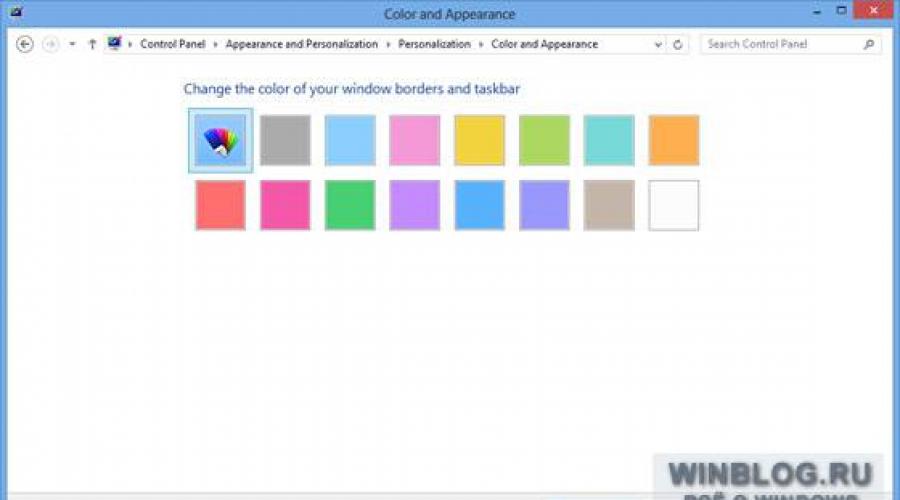
It is worth noting that in Windows 8, compared to the previous version, the ability to work with multiple monitors has also expanded significantly. For desktop users, this is perhaps one of the most interesting innovations, but I will talk about it in more detail in future articles.
Automatic window color adjustment
Windows 7 (and Vista) supports Aero transparency effects for Explorer windows and other desktop interface elements. In Windows 8, it was decided to deprecate Aero in order to extend battery life. Instead, all elements became opaque and "flat" (although the taskbar remained transparent for some reason). So some of the usual personalization features in the "eight" are missing.
However, in Windows 8, of course, you can still change the desktop background, as well as the color of the new opaque window borders. The resulting combinations can, as before, be saved as themes. In Windows 7, the main disadvantage of such themes was that they had to be created manually: if you wanted to supplement the photo of lush Irish greens on your desktop with green window frames, you had to choose the color yourself. In Windows 8, this happens automatically.
To see this, look in the Personalization panel. The easiest way to do this is by right-clicking on the desktop and selecting the option "Personalize" (Personalize).
At the bottom of the window, click the "Window Color" link. The Color and Appearance dialog box opens, somewhat simplified compared to . But there is one new option here - "Automatic" (Automatic), the first of sixteen options for the color of the window frame and taskbar.
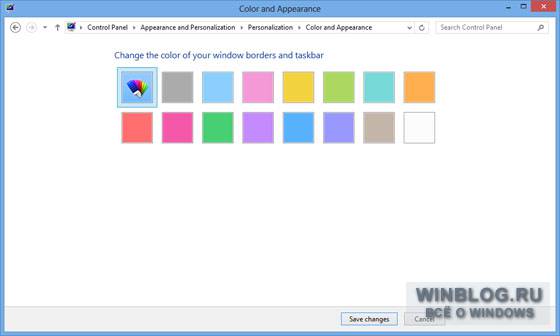
When this option is selected, the color of the window frame and taskbar will automatically change depending on the desktop background. For example, a photograph of a clear blue sky would be set to blue:
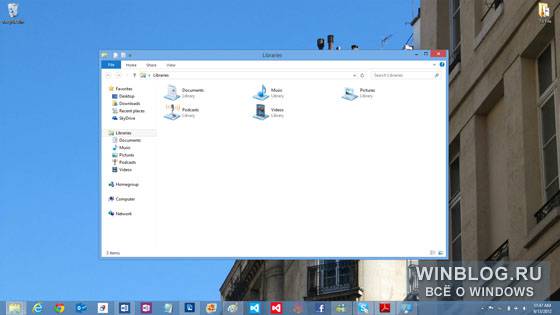
And for the photo of autumn leaves - the brown color of the window frame and taskbar.
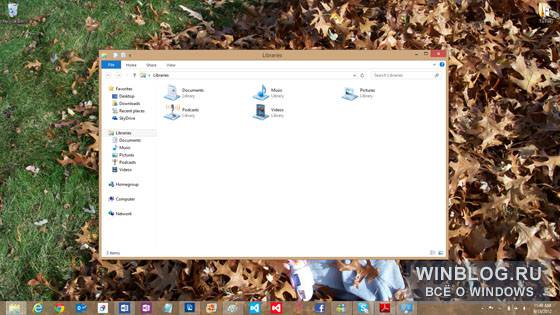
Resizing elements
With the transition to Aero in Windows Vista, it became possible to scale the display so that interface elements are easier to see on large high-resolution screens (otherwise, as the size and resolution of the display increase, icons and menus become small and unreadable). In Windows 8, this feature has been preserved, and in addition, a new unique interface has appeared that allows you to independently control the size of individual elements - the Display control panel. Finding it is not easy, especially if you don't know where to look. But there are two easy ways: use the search on the Start screen for the keyword "display" [ cm.] in the Settings section. Or launch it from the already mentioned "Personalization" panel - in the lower left corner of the window there is a link "Screen".
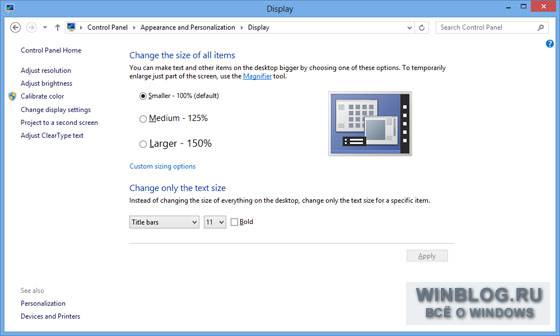
At the top of this window, you can still adjust the display scale. But at the bottom there are new options: here you can independently change the size and other properties of some elements of the Desktop interface related to text - title bars (Title bars), menus (Menus), notifications (Message boxes), toolbars (Palette titles) , icons (Icons) and tooltips (Tooltips).
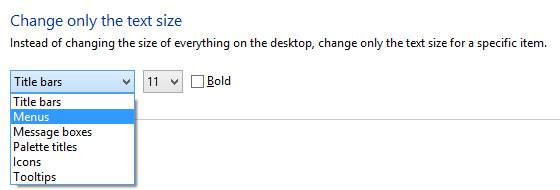
These changes - which require you to log out and log back in to apply - can be very useful for those who find it difficult to work with small interface elements.
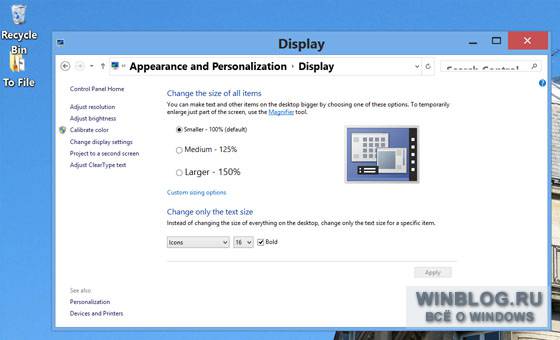
Note: when making changes, try to remember the original settings, because there is no way to restore the default settings.
Sync Desktop Settings
When logging into Windows 8 using a Microsoft account (which I myself practice and strongly advise), you can synchronize settings between different computers using . The Desktop settings are also synchronized - you can verify this by looking at the "Computer Settings | Synchronization of parameters” (PC Settings | Sync Your Settings). The easiest way to get here is by pressing the +[i] keys and selecting Change PC settings | Synchronization of parameters” (Change PC Settings | Sync Your Settings).
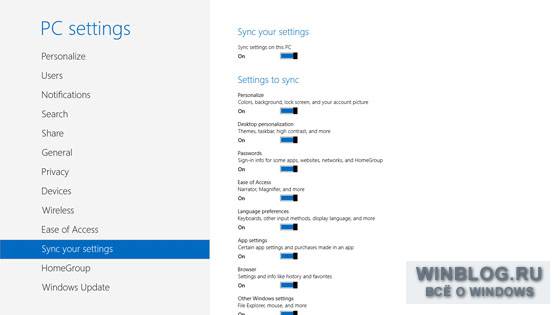
This panel reports that themes, taskbar settings, contrast "and other settings" are synchronized for the Desktop - not very informative and not quite accurate: Windows 8, for example, does not synchronize icons pinned to the taskbar. What actually syncs is the desktop theme (including background, window color, sounds, and screen saver), taskbar personalization options (including its position on the screen), and desktop slideshow options.
In addition, the Desktop concerns not only the design settings. In the “Personalize” item, file bindings are also synchronized - that is, the choice of an application to launch one or another type of file. If you prefer to open the PDF in the desktop Adobe Reader rather than in the Windows Reader Metro application, this will be taken into account when synchronizing settings between computers. In the item "Password" (Password) passwords saved in IE for websites are synchronized. In the "Ease of Access" item, all accessibility settings are synchronized. In the "Browser" item, the settings of the desktop and